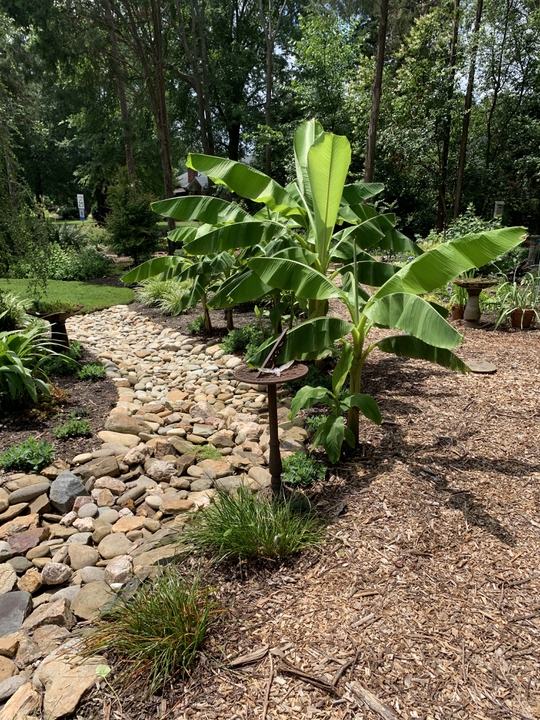Eliminate Hard to Mow Spaces
go.ncsu.edu/readext?849335
en Español / em Português
El inglés es el idioma de control de esta página. En la medida en que haya algún conflicto entre la traducción al inglés y la traducción, el inglés prevalece.
Al hacer clic en el enlace de traducción se activa un servicio de traducción gratuito para convertir la página al español. Al igual que con cualquier traducción por Internet, la conversión no es sensible al contexto y puede que no traduzca el texto en su significado original. NC State Extension no garantiza la exactitud del texto traducido. Por favor, tenga en cuenta que algunas aplicaciones y/o servicios pueden no funcionar como se espera cuando se traducen.
Português
Inglês é o idioma de controle desta página. Na medida que haja algum conflito entre o texto original em Inglês e a tradução, o Inglês prevalece.
Ao clicar no link de tradução, um serviço gratuito de tradução será ativado para converter a página para o Português. Como em qualquer tradução pela internet, a conversão não é sensivel ao contexto e pode não ocorrer a tradução para o significado orginal. O serviço de Extensão da Carolina do Norte (NC State Extension) não garante a exatidão do texto traduzido. Por favor, observe que algumas funções ou serviços podem não funcionar como esperado após a tradução.
English
English is the controlling language of this page. To the extent there is any conflict between the English text and the translation, English controls.
Clicking on the translation link activates a free translation service to convert the page to Spanish. As with any Internet translation, the conversion is not context-sensitive and may not translate the text to its original meaning. NC State Extension does not guarantee the accuracy of the translated text. Please note that some applications and/or services may not function as expected when translated.
Collapse ▲This article was written by Gail Griffin, Extension Master Gardener Volunteer with North Carolina Cooperative Extension in Lee County.
If the checklist you use for mowing grass on that steep hill above the ditch includes a crash helmet and safety harness, maybe it’s time to rethink your lawn strategy. Eliminating hard to mow spaces will not only decrease the amount of time and expense of maintaining them, but also helps reduce areas that are unsafe or are inhospitable to turf.
Ideally, locations for turf include areas that receive at least four hours of sun each day. Both cool and warm season grasses grow best in full sun, some varieties are more tolerant of shade than others. None will grow in heavy shade. Lawn areas need to be well-drained and have a smooth, flat to gently sloping surface. Narrow strips or locations with high foot traffic may not be suitable for some types of grasses.
Replacing sites that are difficult to maintain with plants more adaptable to the area will add diversity to the landscape and improve the overall appearance. Native trees, shrubs and ornamental grasses can be planted on steep slopes that are often too dangerous to mow. Areas too narrow for turf can be replaced with perennial  beds or pollinator gardens. Shady spots can be planted with groundcovers or mulched, especially around trees where root competition usually results in thinning of turf. High traffic zones and playgrounds can also cause wear and tear on turfgrasses. These areas will benefit from the use of mulch or gravel or even stepping stones. In wet, poorly drained sites, choose plants that will tolerate different levels of saturation like mosses or install a rain garden.
beds or pollinator gardens. Shady spots can be planted with groundcovers or mulched, especially around trees where root competition usually results in thinning of turf. High traffic zones and playgrounds can also cause wear and tear on turfgrasses. These areas will benefit from the use of mulch or gravel or even stepping stones. In wet, poorly drained sites, choose plants that will tolerate different levels of saturation like mosses or install a rain garden.
An excellent source of information on lawn alternatives can be found
at chatham.ces.ncsu.edu/wp-content/uploads/2019/04/Sustainable-Lawns-and-Lawn-Alternatives. It includes a listing of tested cultivars of warm and cool season grasses and their advantages and disadvantages. Also are suggestions for lawn alternatives like groundcovers, ornamental grasses and plants that adapt to wet locations.
If this is the time of year you send your mower blades out to be sharpened or belts changed, it’s a good opportunity to evaluate your lawn and try to eliminate those areas that are too tough to mow. Even if we don’t mind the work, we shouldn’t have to take unnecessary risks in doing it. Save the crash helmet and safety harness for the next
time you go skydiving.
Gail Griffin is an Extension Master Gardener Volunteer with North Carolina Cooperative Extension in Lee County.




